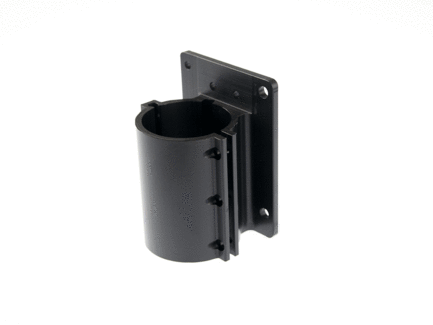After having my Shapeoko 2 for a few years, I decided it was time to give the Z-axis an upgrade to the ACME screw threaded rod, vs. the standard threaded rod it came with. This upgrade should improve Z-axis precision and speed, as well as clean up the mechanical "look" of the system.
I used parts from Inventables- I've always found them to be high quality with good service and speed.
www.inventables.com components used: (with P/N)
- ACME Lead Screw Kit 30658-01 (includes M6 locknut)
- Z-axis motor plate 30534-01
- GT2 Belting 2" x 3" x 1/4" 30547-01
- 20T GT2 Pulley, 8mm Bore 26054-04
- 20T GT2 Pulley, 5mm Bore 26054-01
Additional hardware used:
- 2x M5 x 8mm button head screws
- 1x M3 x 12mm socket head cap screw (SHCS)
- 1x M3 washer
Before I could start assembling the new Z-axis, I had to take apart the existing, stock Shapeoko2, Z-axis.
 |
| Stock ShapeOko 2 Z Axis - before disassembly |
 |
| Z-axis apart and on the table |
1) Use 2x M5 x 8mm button head screws (new screws to assembly) to retain the stock thrust bearing in the new Z-axis plate. I didn't have M5 x 8mm button head screws in my hardware collection, so I used the screws from the belt clips on the Shapeoko and used some M5 x 8mm SHCS on the belt clips.
 |
| Thrust bearing in Z-axis plate |
 |
| Screws in place to retain the bearing |
2) Use 2x M5 x 20mm button head screws to attach the Z-axis plate to the Z-axis makerslide. These screws were part of the original Z-axis assembly. I left the screws a little loose to allow for adjustment once everything was assembled.
3) Attach Z-axis makerslide to X-axis rail using original hardware. At this point it pays to take some time to get the Z-axis makerslide as square as possible with the rest of the machine. The recommended height is to leave just enough makerslide exposed below the X-axis slide to not expose any of the T-slot clips. Depending upon how you want to complete your assembly, you might also consider loading the Z-axis plate to the Z-axis makerslide before bolting it onto the machine.
 |
| Squaring Z-axis slide with the machine |
 |
| Adjusted height to not expose the T-slot clips. |
4) Took off Z-axis plate assembly, dropped Z-axis slide with ACME screw and block onto makerslide, then re-attached Z-axis plate assembly
 |
| Z-axis slide attached |
5) Attach 20T GT2 Pulley (8mm bore) to top of ACME screw with setscrews, then tighten down M6 locknut)
 |
| ACME Screw 20T GT2 Pulley and locknut installed |
6) Using 3x existing M3 x 12 SHCS & M3 washers, plus a new M3 x 12 SHCS & washer, attach stepper motor to Z-axis plate. Do not tighten screws though- you'll need the slop soon to tighten the belt.
 |
| Z-Axis motor installed |
7) Attach the second GT2 pulley to the stepper motor shaft.
8) Load the GT2 Belt across the pulleys. You might have to loosen and remove the motor to get the belt in place. I actually had to completely detach the stepper motor to get the belt across the pulleys.
 |
| Belt in place, ready to test |
9) check that everything is square and all screws are tight.
10) Use Universal G-Code sender or another G-code sender to update the Z-axis steps per mm:
Update Z-Axis setting to:
188.976 Steps/mm (for 12 threads per inch ACME screw thread)
with the following command in Universal G-Code Sender: $2=188.976
Enter $$ in the Universal G-Code sender command prompt to get a list of current GRBL settings. Take a look at the $6 setting- I had to subtract 128 from my current $6 value.
After getting everything set up, it was time to test by manually driving the tool head around using the Universal G-Code Sender's manual controls. Initially I had some binding and stepper motor skipping steps. I ended up having to do a few things to fix the step skipping:
- loosened the screws attaching the Z-axis plate to the Z-axis makerslide, re-aligned the parts
- added a little silicone grease to the ACME screw
- increased the current to the Z-axis stepper by 1 increment on the adjustment pot
No test parts yet....






























